Importing functional mushroom ingredients from Asia—especially Reishi (Ganoderma lucidum)—offers both opportunity and risk. Beyond the visible specifications and certifications, there are hidden traps that can impact quality, legality, and market reputation. In this guide, we expose lesser-known challenges that buyers frequently encounter and how to stay ahead.
1. Mislabeling and Pseudo-Standardized Extracts
Some suppliers label their products as “standardized,” yet they lack verified testing or contain synthetic additives to meet specs artificially. A typical example is overstated polysaccharide levels using maltodextrin as filler.
Red flag: Polysaccharide 40% with no mention of beta-glucan content.
Solution: Always require beta-glucan-specific test results from 3rd-party labs.
Authentic Reishi mushroom extract should list both total polysaccharides and active beta-glucans separately, especially when labeled for immune claims.
2. Exporting without Proper Regulatory Awareness
A recurring issue is when suppliers ship ingredients that don’t align with destination market rules.
EU: Novel food listing, heavy metal limits
US: GRAS status, FDA registration
Canada: NPN pre-approval
Buyers sourcing Lingzhi extract must ensure suppliers understand export country requirements or risk border rejection.
3. Overreliance on Pricing from Trading Companies
Brokers and middlemen often add layers of markup, and they might not represent the factory’s actual capabilities or certifications. This leads to misaligned expectations on quality, delivery time, and documentation.
If you’re sourcing Ganoderma extract regularly, build direct relationships with manufacturers—not intermediaries—who offer transparent production and batch control.
4. Assuming 'Organic' Means Fully Compliant
Even organically labeled powders can be non-compliant. “Organic” in local Chinese terms may not align with USDA or EU certification criteria.
True organic: Must be certified by an internationally recognized body
Look for: USDA Organic, EU Organic with valid cert codes and issuing body
Global buyers should audit China Reishi mushroom extract factory documentation or request digital copies from control bodies.
5. Failing to Plan for Shelf-Life & Stability Testing
Reishi extracts are sensitive to moisture and light. Products that lack proper testing or protective packaging may degrade before retail.
Minimum expectation: 2-year shelf life in sealed foil bag
For RTD use: pH-stability and temperature exposure testing required
Working with a GMP factory ensures Ganoderma lucidum extract is not just potent—but stable throughout the supply chain.
Read More:
Technical Documentation Required for Client Sampling of Ganoderma Raw Materials
Hangzhou Molai Biotech Co., Ltd has supply capacity 1200+ tons per year for mushroom powders and extracts, including the mushroom mycelium from modern technology of Deeply Liquid Fermentation and fruiting bodies from the grown real mushrooms to meet the different markets.
Hangzhou Molai Biotech Co., Ltd supplies the products both in Powders and Extracts for commercial using worldwidely, such as Cordyceps Sinensis, Cordyceps Militaris, Maitake Mushroom, Lion’s Mane Mushroom, Turkey Tail Mushroom, Reishi Mushroom, Chaga Mushroom etc.
We offer OEM and ODM services, could extract the products according to your special requirements, process the powders/extracts into Capsules, Tablets, Small Bags, Mushroom Bars, Mushroom Coffee etc.
Organic Lion's Mane Mushroom Extract
Organic Reishi Mushroom Extract
Organic Cordyceps Militaris Extract
Organic Turkey Tail Mushroom Extract
Organic Chaga Mushroom Extract
Organic Shiitake Mushroom Extract
Organic Maitake Mushroom Extract
Organic Tremella Mushroom Extract

_uMLItV.jpg)




